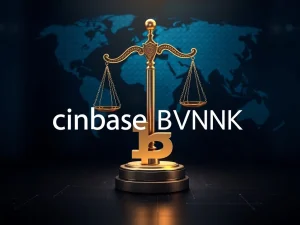Shocking: Crypto Drainers Now Sold as Easy Malware at Tech Fairs

Have you ever wondered how malicious actors, even those without advanced technical skills, manage to steal cryptocurrency? The landscape of crypto theft is evolving rapidly, and a concerning trend reveals that sophisticated tools known as Crypto drainers are now being peddled like regular software, even appearing at IT industry fairs.
The Rise of Drainer-as-a-Service (DaaS)
According to a recent report by crypto forensics firm AMLBot, the ecosystem around Crypto drainers has professionalized, shifting towards a software-as-a-service (SaaS) model. This new approach is often referred to as Drainer-as-a-Service (DaaS).
What does this mean in practice? It means the barrier to entry for crypto theft has dropped significantly. Would-be scammers can now rent drainer software for incredibly low prices, sometimes as little as $100 to $300 USDT. This affordability and accessibility empower individuals with limited technical expertise to engage in large-scale crypto scams.
AMLBot CEO Slava Demchuk highlights this shift:
- Previously, extensive technical knowledge was essential for crypto scams.
- Under the DaaS model, getting started is comparable to other cybercrime types.
- Newcomers learn the ropes by joining online communities, accessing guides and tutorials from experienced scammers.
- This facilitates a transition for criminals already involved in traditional phishing into the crypto space.
Crypto Drainers Go Bold: Appearing at Industry Events
Perhaps one of the most alarming developments is the increasing boldness of drainer operations. Demchuk notes that some groups are becoming so professionalized they resemble traditional businesses, even setting up booths at information technology industry conferences. CryptoGrab is cited as a striking example of this audacious behavior.
This raises a critical question: How can criminal operations openly market their malicious tools at public events without facing immediate repercussions like arrests?
Understanding Cybercrime Russia’s Role
The answer, according to Demchuk, often points to jurisdictions with lax cybercrime enforcement, particularly when the victims are not local. He specifically mentions Cybercrime Russia, where hacking is reportedly tolerated if it doesn’t target individuals within Russia or the post-Soviet space.
This isn’t a new phenomenon. Cybersecurity experts have long observed that many malware strains, including ransomware and information stealers, are designed to deactivate if they detect systems located in Russia or surrounding countries. This strategic avoidance helps operators evade local law enforcement.
The Growing Threat of Crypto Scams
The consequences of this professionalization and ease of access are evident in the rising figures of Crypto scams. Scam Sniffer reported approximately $494 million in losses due to drainers in 2023, a significant 67% increase from the previous year. While the number of victims saw a smaller increase, the average loss per victim rose substantially.
Furthermore, the infrastructure supporting drainers is expanding. Kaspersky noted a rise in online resources dedicated to drainers on darknet forums, increasing from 55 in 2022 to 129 in 2024. This indicates a growing ecosystem facilitating these criminal activities.
Recruiting Talent and Shifting Platforms for Crypto Malware
The development of sophisticated Crypto malware requires technical skill. Interestingly, developers are often recruited through seemingly normal channels. AMLBot’s intelligence investigator found job postings specifically seeking developers to build drainers for Web3 ecosystems, often targeting Russian speakers.
These recruitment efforts and the broader communication among criminals occur across various platforms:
- Gray and black-hat forums (clearnet and darknet)
- Telegram groups and channels
- Gray market platforms
Communication platforms have also seen shifts. While Telegram became popular due to its privacy reputation, reports of data sharing led some activity back to the more anonymous Tor network. However, Telegram’s recent stance against potential EU encryption backdoors might influence future platform choices for these groups.
Summary
The evolution of crypto drainers into a professionalized Drainer-as-a-Service model is a significant threat. It lowers the technical bar for entry, making it easier for individuals to engage in costly Crypto scams. The audacity of some groups, even appearing at IT fairs, highlights the challenge posed by jurisdictions where Cybercrime Russia operates with relative impunity against foreign targets. As the volume and sophistication of Crypto malware grow, staying vigilant and informed is more crucial than ever for anyone involved in the cryptocurrency space.







